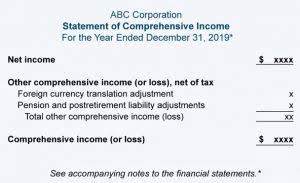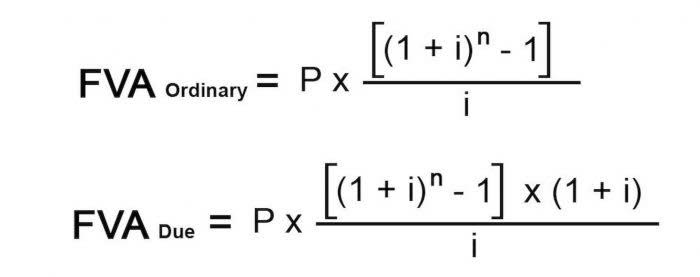Notice: Trying to access array offset on value of type bool in /home/quintasdesantanna/domains/quintasdesantanna.com.br/public_html/wp-content/themes/betheme/functions/theme-functions.php on line 1502
Notice: Trying to access array offset on value of type bool in /home/quintasdesantanna/domains/quintasdesantanna.com.br/public_html/wp-content/themes/betheme/functions/theme-functions.php on line 1507
Notice: Trying to access array offset on value of type bool in /home/quintasdesantanna/domains/quintasdesantanna.com.br/public_html/wp-content/themes/betheme/functions/theme-functions.php on line 1528
Notice: Trying to access array offset on value of type bool in /home/quintasdesantanna/domains/quintasdesantanna.com.br/public_html/wp-content/themes/betheme/functions/theme-functions.php on line 1529
Notice: Trying to access array offset on value of type bool in /home/quintasdesantanna/domains/quintasdesantanna.com.br/public_html/wp-content/themes/betheme/functions/theme-functions.php on line 1530
Understanding Ethereum Virtual Machine EVM
22/01/2024Analista ou cientista de dados: qual a diferença e como passar de uma profissão para a outra
13/02/2024Notice: Trying to access array offset on value of type bool in /home/quintasdesantanna/domains/quintasdesantanna.com.br/public_html/wp-content/themes/betheme/functions/theme-functions.php on line 1502
Notice: Trying to access array offset on value of type bool in /home/quintasdesantanna/domains/quintasdesantanna.com.br/public_html/wp-content/themes/betheme/functions/theme-functions.php on line 1507
Notice: Trying to access array offset on value of type bool in /home/quintasdesantanna/domains/quintasdesantanna.com.br/public_html/wp-content/themes/betheme/functions/theme-functions.php on line 1528
Notice: Trying to access array offset on value of type bool in /home/quintasdesantanna/domains/quintasdesantanna.com.br/public_html/wp-content/themes/betheme/functions/theme-functions.php on line 1529
Notice: Trying to access array offset on value of type bool in /home/quintasdesantanna/domains/quintasdesantanna.com.br/public_html/wp-content/themes/betheme/functions/theme-functions.php on line 1530

For instance, you purchase a new machine that creates more manufactured units and sales. In this example, the only expense incurred involved purchasing raw materials. In reality, you’ll have other expenses to account for, such as operating expenses. Make sure you’re on top of your expense management processes to record these numbers accurately. These principles smooth income reporting, giving you a good idea of what drives revenues and the expenses your business needs to function smoothly. If you didn’t incur expenses purchasing t-shirts, you couldn’t have sold them for a profit.

You can look to prior similar bills, contracts, or external parties for help estimating an expense accrual. Regular checks and audits of your accounts can catch and fix mistakes early. Focus on areas where errors are likely, and adjust your accounts to make sure they follow the Expense Recognition Principle. For the past 52 years, Harold Averkamp (CPA, MBA) has worked as an accounting supervisor, manager, consultant, university instructor, and innovator in teaching accounting online.
Accrual Basis Accounting and Its Role in Expense Recognition
Accrual accounting is an accounting method that records revenues and expenses before payments are received or issued. It records expenses when a transaction for the purchase of goods or services occurs. Unlike the cash method, the accrual method records revenue when a product or service is delivered to a customer with the expectation that money will be paid in the future. Likewise, https://www.bookstime.com/ expenses for goods and services are recorded before any cash is paid out for them. The expense recognition principle states that companies should recognize expenses at the same time as matching revenues. The expense recognition principle is a generally accepted accounting principle (GAAP) within the U.S., established by the Financial Accounting Standards Board (FASB).
A thorough grasp of these methods is essential for properly applying the Expense Recognition Principle, ensuring financial statements accurately reflect the company’s economic activities. Learn about the principles of accrual accounting and understand when expenses are recognized. In this method, you’ll record expenses in the same period as the revenue generated by those costs. Naturally, you must establish a clear link between expenses and revenues for this method to work. Businesses must have a reasonable degree of certainty that they’ll receive revenues upon completing an activity.
Current Guidelines for Expense Recognition
The expense recognition principle is a small but critical part of U.S. generally accepted accounting principles (GAAP). Incorrect expense recognition can skew income statements and balance sheet numbers, leading to restated financial results. Cash accounting is often preferred because it’s simpler and easier to use.
- Accrual accounting is an accounting method that records revenues and expenses before payments are received or issued.
- Accrual accounting is widely used in various industries and is required for financial reporting by generally accepted accounting principles (GAAP) and International Financial Reporting Standards (IFRS).
- While he cannot tie the expense to a specific revenue source, the machine will be helping to produce revenue throughout its useful life, which is estimated at seven years.
- One of the main goals of company management teams is to maximize profits.
- During the year, AMC sold 6,500 inventory units at USD48 per unit, receiving payment in cash.
- The expense recognition principle states that expenses should be recognized in the same period as the revenues to which they relate.
- Under the accrual method, the $5,000 is recorded as revenue as of the day the sale was made, though you may receive the money a few days, weeks, or even months later.
An example illustrating the expense recognition principle involves recognizing the costs of goods sold at the selling price when a product is sold, not when the payment is received. This scenario demonstrates the accrual accounting method, a cornerstone type of accounting, highlighting the importance of recognizing expenses in the same period as the revenues they help to generate. This practice provides a more accurate representation when are expenses recognized of a company’s financial health and performance. Opting for expense recognition for development costs lowers net operating cash flows and elevates net investing cash flows on the cash flow statement. Adjustments can align their financial performance when comparing companies like Microsoft (expenses development) to those capitalizing. Ratios involving income, assets, and cash flow–like return on equity–will also be influenced.
How does the expense recognition principle relate to revenue recognition?
It can be difficult to assign an expense to a particular revenue source, especially when purchasing items such as factory equipment. However, when equipment is purchased, you will expense the usage of the equipment over its useful life through depreciation. You can’t deduct legal and other fees related to buying a capital property, but you can add these fees to your property cost. Capital expenditures, commonly known as CapEx, are funds used by a company to acquire, upgrade, and maintain physical assets such as property, buildings, an industrial plant, technology, or equipment. As a result, an investor might conclude the company is making a profit when, in reality, the company might be facing financial difficulties.

Today’s companies rely on modern accounting software that handles much of the process for you. With the right tools, keeping your books entirely free of errors is possible. It’s not uncommon for business owners to make accounting mistakes, such as recording costs in the wrong period or counting revenue they haven’t earned. While those errors may seem innocuous, they can lead to serious issues, such as underpaying your business taxes. This adherence not only maintains the integrity of financial reporting but also enhances stakeholder trust and confidence in the company’s financial practices. These are just a few examples of the various expenses that businesses encounter.
Accounting standards mandate capitalizing software development costs upon establishing product feasibility. However, variations arise due to judgment in feasibility assessment, leading to differing capitalization practices. Choosing to expense development costs instead of capitalizing them reduces current-period net income. This holds as long as current development expenses surpass amortization from prior capitalized costs, typical during cost escalation.

Notice: Trying to access array offset on value of type null in /home/quintasdesantanna/domains/quintasdesantanna.com.br/public_html/wp-content/themes/betheme/includes/content-single.php on line 286
Related posts
Notice: Trying to access array offset on value of type bool in /home/quintasdesantanna/domains/quintasdesantanna.com.br/public_html/wp-content/themes/betheme/functions/theme-functions.php on line 1624
Notice: Trying to access array offset on value of type bool in /home/quintasdesantanna/domains/quintasdesantanna.com.br/public_html/wp-content/themes/betheme/functions/theme-functions.php on line 1624
Notice: Trying to access array offset on value of type bool in /home/quintasdesantanna/domains/quintasdesantanna.com.br/public_html/wp-content/themes/betheme/functions/theme-functions.php on line 1624
Notice: Trying to access array offset on value of type bool in /home/quintasdesantanna/domains/quintasdesantanna.com.br/public_html/wp-content/themes/betheme/functions/theme-functions.php on line 1624
Notice: Trying to access array offset on value of type bool in /home/quintasdesantanna/domains/quintasdesantanna.com.br/public_html/wp-content/themes/betheme/functions/theme-functions.php on line 1624
Notice: Trying to access array offset on value of type bool in /home/quintasdesantanna/domains/quintasdesantanna.com.br/public_html/wp-content/themes/betheme/functions/theme-functions.php on line 1624
